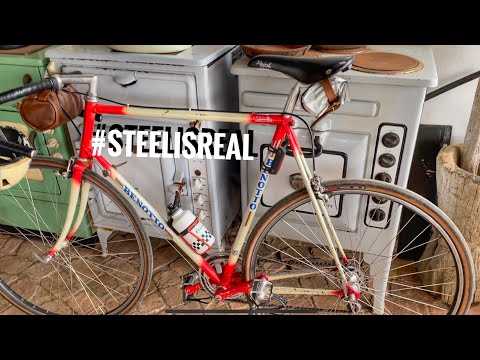
Welcome to Buffs Vintage Bikes, the ultimate guide for all you bike enthusiasts and buffs out there! If you have a passion for classic bicycles and want to bring them back to their former glory, you’ve come to the right place. In this comprehensive guide, we will take you through the step-by-step process of restoring vintage bikes, from finding the perfect project to the finishing touches that will make your bike shine.
Whether you’re a seasoned bike restorer or just starting out, Buffs Vintage Bikes has something for everyone. We understand the joy and satisfaction that comes from breathing new life into old bikes, and we want to share our knowledge and expertise with you. With our detailed instructions and helpful tips, you’ll be able to tackle any restoration project with confidence.
Restoring a classic bicycle is not just about fixing up an old bike, it’s about preserving a piece of history and showcasing the craftsmanship of a bygone era. Each bike has its own story to tell, and by restoring it, you become a part of that story. Whether it’s a vintage road bike, a classic cruiser, or a retro mountain bike, Buffs Vintage Bikes will guide you through the process of reviving these timeless treasures.
So, if you’re ready to embark on a journey of discovery and restoration, join us at Buffs Vintage Bikes. Let’s dive into the world of classic bicycles together and bring these beautiful machines back to life. Get your tools ready, put on your buffs, and let’s restore some bikes!
Contents
- 1 The Beauty of Vintage Bicycles
- 2 Why Restore a Classic Bicycle?
- 3 Getting Started with Classic Bicycle Restoration
- 4 Essential Steps in Classic Bicycle Restoration
- 5 Tips and Techniques for Classic Bicycle Restoration
- 6 Video:The Complete Guide to Restoring Classic Bicycles: Buffs Vintage Bikes Offers Expert Tips and Techniques
The Beauty of Vintage Bicycles
There is something truly captivating about vintage bikes. These classic bicycles exude a sense of nostalgia and charm that is hard to find in modern designs. From the elegant curves of the frame to the intricate details of the components, vintage bikes are a testament to the craftsmanship of a bygone era.
One of the most striking features of vintage bikes is their timeless beauty. The sleek lines and graceful proportions of these bicycles make them a true work of art. Whether it’s a classic road bike or a retro cruiser, each vintage bike has its own unique style that sets it apart from the rest.
Another aspect that adds to the beauty of vintage bikes is the patina that develops over time. The signs of wear and tear on the paint and chrome give these bicycles a sense of history and character. It’s like owning a piece of cycling history that tells a story of the miles traveled and the adventures had.
But it’s not just the aesthetics that make vintage bikes so special. These bicycles were built to last, with sturdy steel frames and timeless designs. The craftsmanship and attention to detail that went into making these bikes are evident in their durability and performance. Riding a vintage bike is like stepping back in time and experiencing the joy of cycling in its purest form.
Whether you’re a seasoned collector or a casual enthusiast, there is no denying the allure of vintage bikes. They are a reminder of a simpler time when things were built to last and style was just as important as function. So next time you see a vintage bike, take a moment to appreciate the beauty and craftsmanship that went into creating it. It’s a piece of history that deserves to be cherished and admired.
Why Restore a Classic Bicycle?

Restoring a vintage bicycle can be a rewarding and fulfilling experience for buffs of classic bikes. There are several reasons why one might choose to undertake a restoration project:
| Preserving History | Classic bicycles tell a story of a bygone era. Restoring them helps to preserve the history and craftsmanship of these vintage machines, allowing future generations to appreciate their beauty and significance. |
| Personal Connection | Many enthusiasts feel a personal connection to classic bicycles. Restoring a bike that was owned by a family member or that has sentimental value can be a way to honor their memory and relive fond memories. |
| Unique Style | Classic bicycles often have a timeless and unique style that sets them apart from modern bikes. Restoring a vintage bike allows riders to stand out from the crowd and showcase their individuality. |
| Sustainable Choice | By restoring a classic bicycle instead of buying a new one, enthusiasts contribute to a more sustainable and eco-friendly lifestyle. Reusing and repurposing old bikes helps to reduce waste and minimize the environmental impact. |
| Hands-On Experience | Restoring a classic bicycle requires mechanical skills and attention to detail. It offers enthusiasts the opportunity to learn and develop new skills, gaining a sense of accomplishment and pride in their work. |
Whether it’s for the love of history, personal connection, unique style, sustainability, or the joy of hands-on restoration, there are many reasons why buffs of vintage bikes choose to restore classic bicycles.
Getting Started with Classic Bicycle Restoration
If you’re a fan of vintage bikes and have a passion for restoring them to their former glory, then you’re in luck. Classic bicycle restoration is a rewarding hobby for buffs of all ages. Whether you’re a seasoned pro or just starting out, this guide will help you get started on your restoration journey.
The first step in classic bicycle restoration is to find the perfect vintage bike to work on. Look for bikes that are in decent condition and have good bones. It’s important to choose a bike that you feel a connection with and that you can envision restoring to its former beauty.
Once you have your vintage bike, it’s time to start the restoration process. The first task is to thoroughly clean the bike, removing any dirt, rust, or grime. This will give you a better idea of the bike’s condition and what repairs or replacements may be needed.
Next, inspect the bike for any damage or missing parts. Take note of what needs to be repaired or replaced, and make a list of the necessary parts and tools you’ll need for the restoration. This will help you stay organized and ensure you have everything you need before you start the actual restoration work.
When it comes to restoring a classic bicycle, patience is key. Take your time and work methodically, focusing on one task at a time. It’s important to remember that restoration is a process, and it may take some trial and error to get things just right.
Finally, don’t be afraid to ask for help or seek out advice from fellow buffs or experts in the field. There are many online forums, communities, and resources available for vintage bike enthusiasts. Connecting with others who share your passion can not only provide valuable guidance but also make the restoration journey even more enjoyable.
So, if you’re ready to dive into the world of classic bicycle restoration, follow these steps and get started on your own project. With time, dedication, and a love for vintage bikes, you’ll be able to transform an old, neglected bicycle into a true work of art.
Tools and Equipment You’ll Need
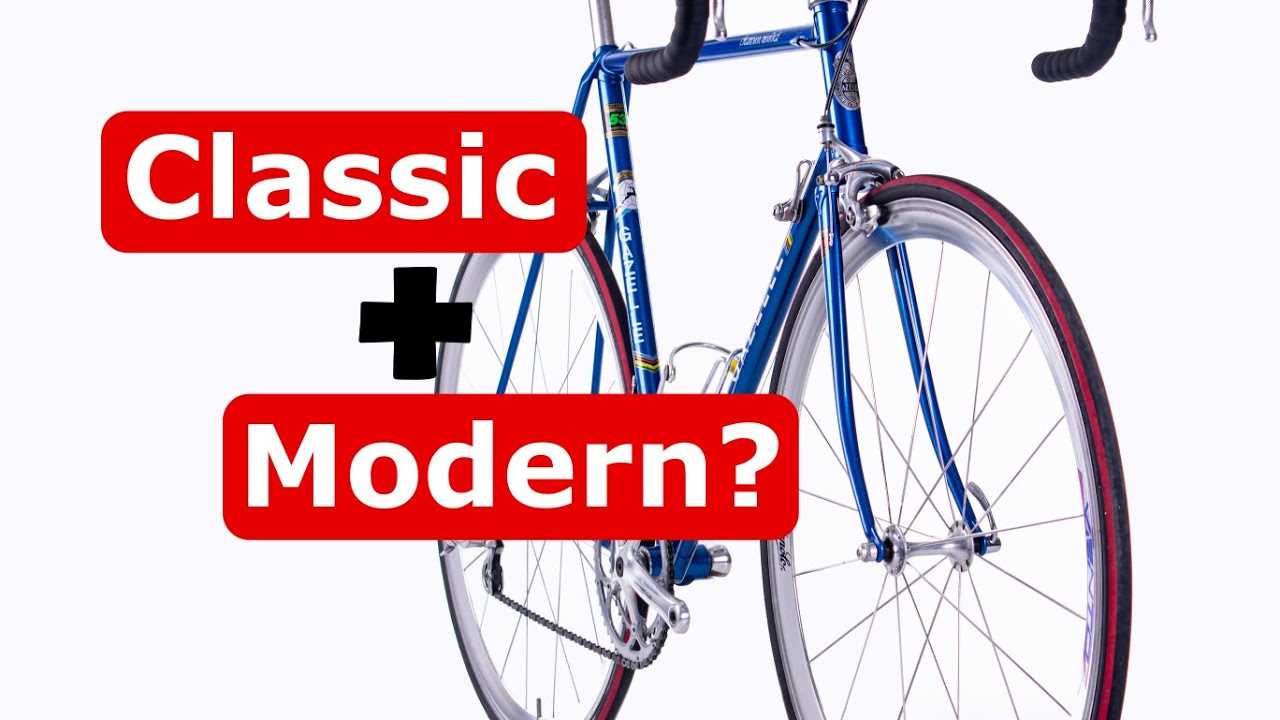
When it comes to restoring vintage bikes, having the right tools and equipment is essential. Here are some of the must-have items for any buffs looking to bring a classic bicycle back to its former glory:
- Set of screwdrivers: A variety of screwdrivers in different sizes will be needed to remove and replace screws throughout the restoration process.
- Adjustable wrench: This versatile tool is perfect for tightening or loosening nuts and bolts of various sizes.
- Pliers: Having a set of pliers will come in handy for gripping and bending wires, as well as removing stubborn parts.
- Allen wrenches: These hexagonal-shaped wrenches are commonly used for assembling and disassembling bicycle components.
- Tire levers: These small tools are specifically designed to help remove and install tires without damaging the rims.
- Chain breaker tool: This tool allows you to remove and replace bike chains, making it essential for any vintage bike restoration.
- Spoke wrench: A spoke wrench is necessary for adjusting the tension of the spokes, ensuring the wheels are properly aligned.
- Chain whip: This tool is used in conjunction with a cassette lockring tool to remove and replace the cassette on the rear wheel.
- Bike stand: Having a bike stand will make the restoration process much easier, as it allows you to elevate the bike and work on it at a comfortable height.
- Cleaning supplies: To restore a vintage bike, you’ll need various cleaning supplies such as degreasers, brushes, and rags to remove dirt and grime.
These are just a few of the tools and equipment you’ll need to successfully restore a vintage bike. Remember to invest in quality tools, as they will make the restoration process smoother and more enjoyable. With the right tools in hand, you’ll be well-equipped to bring your classic bicycle back to life.
Finding the Right Vintage Bicycle
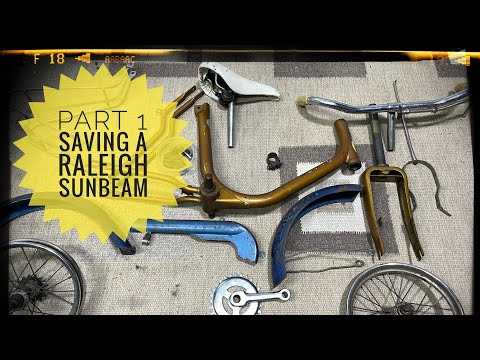
When it comes to finding the right vintage bicycle, buffs and enthusiasts know that it’s not just about the looks, but also about the quality and condition of the bike. Here are some tips to help you find the perfect vintage bicycle for your restoration project:
- Do your research: Before you start your search, take the time to learn about different vintage bicycle brands and models. This will help you narrow down your options and make a more informed decision.
- Inspect the frame: The frame is the foundation of any bicycle, so it’s important to carefully inspect it for any signs of damage or rust. Look for any cracks, dents, or deep scratches that could affect the structural integrity of the bike.
- Check the components: Vintage bicycles often have unique and hard-to-find components, so make sure to check if all the parts are original and in good working condition. Look for any missing or damaged components, and consider the cost and availability of replacements.
- Consider the size: Vintage bicycles come in different sizes, so it’s important to find one that fits your body type and riding style. Take measurements of your inseam and compare them to the bike’s frame size to ensure a comfortable and efficient ride.
- Test ride if possible: If you have the opportunity, take the vintage bicycle for a test ride. This will give you a better sense of how it handles and if any adjustments or repairs are needed.
- Set a budget: Vintage bicycles can vary greatly in price, so it’s important to set a budget before you start your search. Consider the cost of restoration and any additional parts or accessories you may need.
- Buy from reputable sellers: To ensure you’re getting a quality vintage bicycle, it’s best to buy from reputable sellers. Look for sellers who specialize in vintage bicycles and have a good reputation for their knowledge and expertise.
By following these tips, you’ll be well on your way to finding the right vintage bicycle for your restoration project. Happy hunting!
Essential Steps in Classic Bicycle Restoration
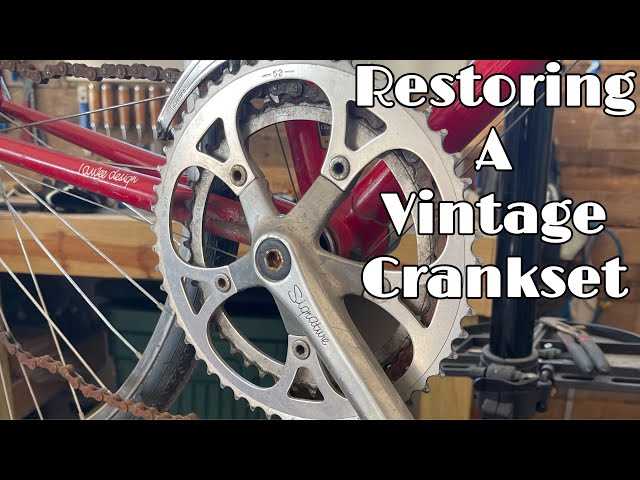
Restoring a vintage bicycle can be a rewarding project for buffs of classic bikes. Whether you have stumbled upon a neglected gem at a garage sale or inherited a family heirloom, bringing an old bicycle back to its former glory requires careful attention to detail and a systematic approach. Here are the essential steps to follow when restoring a classic bicycle:
1. Assessment: Begin by thoroughly inspecting the bike and assessing its overall condition. Look for any rust, dents, or missing parts that will need to be addressed during the restoration process.
2. Disassembly: Next, carefully disassemble the bike, taking note of the order and location of each component. This will make reassembly much easier later on.
3. Cleaning: Clean each part of the bike to remove dirt, grime, and rust. Use a gentle cleanser and a soft brush or cloth to avoid damaging the vintage finish.
4. Repair and Replace: Repair any damaged or rusted parts and replace any missing components with authentic vintage parts whenever possible. This will help maintain the originality and value of the bike.
5. Frame Restoration: If the bike’s frame has rust or scratches, consider sanding it down and applying a fresh coat of paint or clear coat to protect it from further damage.
6. Reassembly: Once all the parts have been cleaned and repaired, carefully reassemble the bike, following the notes and pictures taken during the disassembly process.
7. Lubrication: Apply appropriate lubrication to all moving parts, such as the chain, gears, and bearings, to ensure smooth operation and prevent future wear and tear.
8. Final Touches: Give the bike a final inspection and make any necessary adjustments to ensure everything is in working order. Polish the bike’s chrome parts and apply a protective wax or sealant to enhance its shine.
Restoring a vintage bicycle requires patience, attention to detail, and a love for the craftsmanship of the past. By following these essential steps, you can bring new life to a classic bike and enjoy the ride for years to come.
Cleaning and Removing Rust
One of the challenges of restoring vintage bikes is dealing with rust. Over time, the metal parts of a bike can start to develop rust, which not only affects the appearance but also the performance of the bike. However, with the right tools and techniques, you can effectively clean and remove rust from your vintage bike.
Before you start cleaning, it’s important to gather the necessary tools. You will need a wire brush, steel wool, sandpaper, rust remover, and a soft cloth. Begin by gently scrubbing the rusted areas with the wire brush to remove any loose rust. Once the loose rust is removed, you can use steel wool or sandpaper to further scrub the rusted areas. Be careful not to apply too much pressure, as this can damage the surface of the metal.
After scrubbing, it’s time to apply a rust remover. There are many rust removers available in the market, so choose one that is suitable for your vintage bike. Follow the instructions on the rust remover packaging and apply it to the rusted areas. Allow the rust remover to sit for the recommended amount of time, usually around 15-30 minutes.
Once the rust remover has done its job, use a soft cloth to wipe away the rust and rust remover residue. You may need to repeat this process multiple times to completely remove the rust. After removing the rust, make sure to thoroughly clean and dry the metal parts of your vintage bike.
After cleaning and removing the rust, it’s important to protect the metal from further rusting. You can apply a rust inhibitor or a protective coating to prevent future rust formation. Additionally, regular maintenance and cleaning will help keep your vintage bike in top condition.
Remember, restoring vintage bikes takes time and effort, but the end result is worth it. By cleaning and removing rust from your vintage bike, you can bring it back to its former glory and enjoy the ride on a classic piece of cycling history.
Repairing and Replacing Parts
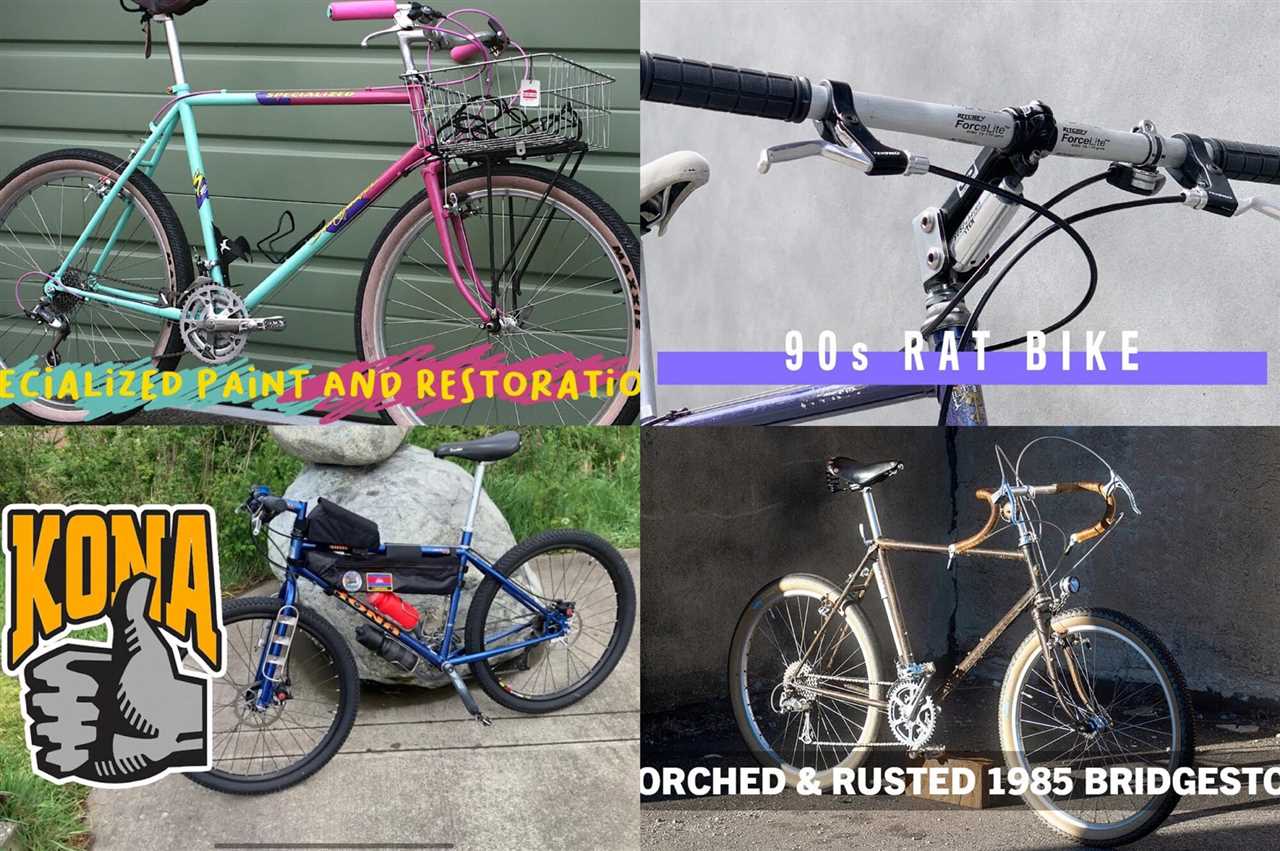
For buffs of vintage bikes, restoring and maintaining these classic machines is a labor of love. One of the most important aspects of restoration is repairing and replacing parts that have deteriorated over time. Whether it’s a rusty chain, a worn-out saddle, or a broken brake lever, knowing how to fix and replace these components is essential for keeping your vintage bike in top condition.
Rusty Chains: Over time, chains can become rusty and lose their flexibility. To repair a rusty chain, start by removing it from the bike. Soak the chain in a degreaser solution to remove dirt and grime. Next, use a wire brush to scrub away the rust. Once the chain is clean, lubricate it with a high-quality bike chain oil to prevent future rusting.
Worn-out Saddles: Vintage bike saddles are often made of leather, which can become worn and cracked over time. To repair a worn-out saddle, start by cleaning it with a soft cloth and mild soap. Apply a leather conditioner to soften and moisturize the leather. If the saddle is too damaged to repair, consider replacing it with a new one that matches the vintage style of your bike.
Broken Brake Levers: Brake levers are crucial for safe riding, so it’s important to replace them if they are broken or damaged. Start by removing the old brake lever from the handlebars. Install a new brake lever by attaching it to the handlebars and tightening the bolts. Make sure the lever is securely in place and test the brakes before riding.
Worn-out Tires: Vintage bike tires can become worn and cracked over time, compromising the ride quality and safety of the bike. To replace worn-out tires, start by deflating and removing the old tires from the rims. Install new tires by fitting them onto the rims and inflating them to the recommended pressure. Make sure the tires are properly aligned and balanced before riding.
Remember, restoring a vintage bike requires patience, attention to detail, and a willingness to learn new skills. By repairing and replacing parts as needed, you can ensure that your classic bicycle remains in excellent condition for years to come.
Painting and Finishing Touches
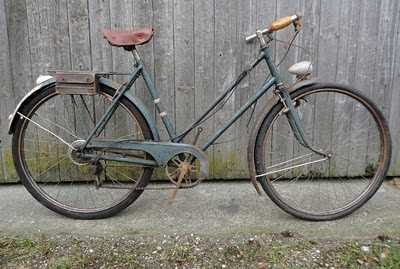
When it comes to restoring vintage bikes, one of the most important steps is painting and adding finishing touches. A fresh coat of paint can bring new life to an old bike and make it look like it just rolled off the assembly line.
Before you start painting, make sure to properly prepare the bike’s surface. This includes sanding down any rough spots or rust, and cleaning the frame thoroughly. Once the surface is smooth and clean, you can begin applying primer. Primer helps the paint adhere to the frame and provides a smooth base for the final color.
When choosing a color for your vintage bike, you have a few options. You can choose to stick with the original color, which can help maintain the bike’s authenticity. Alternatively, you can choose a new color that reflects your personal style. Just make sure to use a high-quality paint that is specifically designed for bikes, as this will ensure a long-lasting finish.
After the paint has dried, it’s time to add the finishing touches. This includes applying decals or stickers, if desired. Vintage bikes often have unique decals that can really enhance the overall look of the bike. Additionally, you may want to add a clear coat to protect the paint and give it a glossy finish.
Don’t forget about the small details when it comes to finishing touches. This includes polishing any chrome parts, such as the handlebars or fenders, and replacing any worn or damaged components. These small touches can make a big difference in the overall appearance of your vintage bike.
With a fresh coat of paint and some finishing touches, your vintage bike will be ready to hit the road in style. Whether you’re restoring a classic cruiser or a sleek road bike, taking the time to properly paint and add those final details will ensure that your bike looks as good as new.
Tips and Techniques for Classic Bicycle Restoration
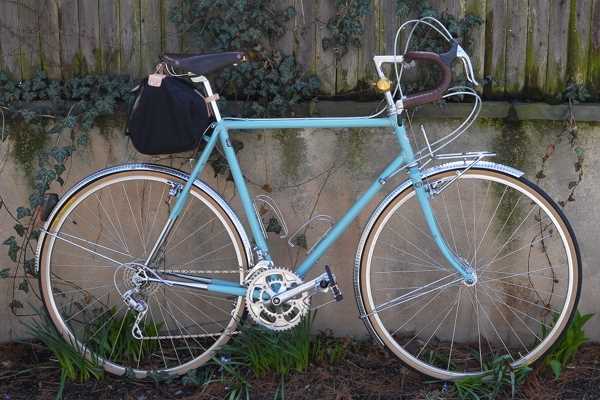
Restoring classic bikes requires a combination of patience, skill, and attention to detail. Whether you’re a seasoned pro or just starting out, these tips and techniques will help you bring your vintage bike back to life.
1. Research and Documentation
Before you begin any restoration project, it’s important to do your research. Find out as much as you can about the specific make and model of your bike. Look for original documentation, manuals, and catalogs that can provide valuable information about the bike’s original specifications and features.
2. Cleaning and Preservation
Start by thoroughly cleaning the bike to remove dirt, rust, and other debris. Use a gentle cleanser and a soft cloth to avoid scratching the paint or damaging any delicate components. Once clean, apply a protective coating or wax to preserve the bike’s finish.
3. Parts Replacement
If any parts are missing or damaged, try to find original replacements. Look for vintage bike shops, online marketplaces, and forums where you can find rare and hard-to-find parts. If you can’t find an exact match, consider using compatible parts from the same era.
4. Frame Repair and Refinishing
If the bike’s frame is damaged, you may need to repair or replace it. Consult a professional bike frame builder or restorer to ensure that the repair is done correctly. Once repaired, you can refinish the frame with a fresh coat of paint or powder coating to give it a new lease on life.
5. Component Overhaul
Take apart each component of the bike, such as the brakes, gears, and pedals, and clean them thoroughly. Replace any worn or damaged parts, and lubricate the moving parts to ensure smooth operation. Pay attention to small details, such as cable routing and alignment, to ensure optimal performance.
6. Upholstery and Accessories
Don’t forget about the bike’s upholstery and accessories. Replace worn or torn saddle covers, handlebar tape, and grips with new ones that match the bike’s original style. Add any missing accessories, such as fenders, lights, or racks, to complete the authentic vintage look.
7. Test and Adjust
Once you’ve completed the restoration, take the bike for a test ride. Pay attention to any issues or adjustments that need to be made, such as brake alignment, gear shifting, or wheel truing. Fine-tune these elements to ensure that the bike is not only beautiful but also functional.
Remember, restoring classic bikes is a labor of love. Take your time, enjoy the process, and appreciate the craftsmanship of these timeless machines. Happy buffing!
Preserving Originality vs. Customization
When it comes to vintage bikes, buffs are often faced with the choice between preserving originality or going for customization. Both options have their merits and it ultimately depends on the individual’s preferences and goals for their bike.
Preserving originality involves keeping the bike as close to its original condition as possible. This includes maintaining the original paint, components, and accessories. For buffs who appreciate the historical and nostalgic value of vintage bikes, preserving originality is a way to honor the craftsmanship and design of the past. It allows them to experience the bike as it would have been when it first rolled off the assembly line.
On the other hand, customization offers the opportunity to make the bike unique and tailored to the owner’s tastes. It allows buffs to put their own personal stamp on the bike, whether it’s through a custom paint job, upgraded components, or unique accessories. Customization can also improve the bike’s performance and functionality, making it more suitable for modern riding conditions.
While some buffs prefer to stick with preserving originality or customization exclusively, there are also those who find a balance between the two. They may choose to preserve the bike’s original frame and components while making minor customizations, such as adding a modern saddle or upgrading the brakes. This allows them to maintain the vintage aesthetic while still enjoying the benefits of modern technology.
Ultimately, the decision between preserving originality and customization is a personal one. Whether you’re a purist who wants to keep the bike as it was or someone who wants to put their own creative spin on it, both approaches can result in a unique and enjoyable vintage biking experience.
Video:The Complete Guide to Restoring Classic Bicycles: Buffs Vintage Bikes Offers Expert Tips and Techniques
FREE BIKE RESTORATION – Rusty Campagnolo Vintage Bike

Since childhood, I’ve been fascinated with vintage scooters and motorcycles. After university, I founded a workshop that restored classics like Vespas, Lambrettas, and MZs. With my girlfriend, Akiko Tanaka, I run the workshop’s website and showcase our custom restorations at iconic rallies across Europe and North America. Our Lambretta won first place at the 2019 Euro Lambretta meet in Germany. Through our website and global events, we share our passion for restoring and riding these retro rides.
